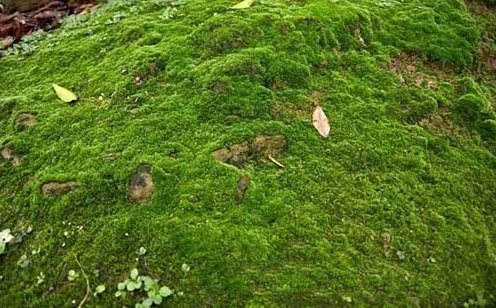The necessity of moss prevention and control
We can see from the habits and hazards of moss: Moss is a major scourge on golf courses. It not only affects the maintenance cost of the golf course, for example, its ability to compete for nutrients is much greater than that of turf grass, but also affects the air and water permeability of the soil, and also affects the landscape of the golf course. And when the damage is serious, it can cause large areas of lawn to wither, destroy the stadium, and endanger the operation of the stadium. Therefore, its management and removal is a long-term concern for stadium lawn maintenance.
Prevention and control measures of moss on the golf course
The occurrence of moss is not only related to soil conditions, but also to climatic conditions and fertilization levels. Prevention and control work should be carried out starting from daily management.
1. Prevention in advance
In daily maintenance and management, various management measures should be correctly implemented, and the implementation time of each measure (especially March-November each year) and implementation method (prevention with medication in advance) should be accurately grasped, so that the turf grass can be in a healthy growth stage. status, reducing the possibility of being infested with moss.
2. Improve soil structure
The lawn is often trampled, which will compact the soil and affect the growth of the lawn root system. It improves soil ventilation and makes the lawn root system grow strong. It not only improves the lawn’s resistance to moss infection, but also makes holes, punctures, and scratches. Aeration operations such as breaking can also destroy the airtightness of the villi on the moss epidermis, accelerating the process of drying out and peeling off scabs, killing two birds with one stone.
3. Adjust soil pH
The most suitable soil pH for turfgrass is weakly acidic to neutral, so the pH should be adjusted according to soil conditions. On acidic soils, hydrated lime can be applied to increase soil pH. On alkaline soils, gypsum, sulfur or alum can be used to increase acidity to provide a suitable soil pH for the growth of turfgrass.
4. Reduce shade
Reduce shade and improve ventilation conditions. This move can not only increase sunlight and reduce soil surface moisture, but strong sunlight exposure can also dehydrate, shrink, crack, and uncover scabs on the sealed villi of the moss, breaking the suffocation of the lawn caused by its sealing, allowing the lawn to gradually grow toward normal.
5. Scientific fertilization and reasonable watering
Scientific and reasonable fertilization, reducing the use of nitrogen fertilizers, appropriate use of phosphate fertilizers to promote root growth, reduce surface soil pH, and prevent moss infection. It is necessary to irrigate properly and avoid improper watering to promote the healthy growth of lawn grass.
6. Reasonable pruning
Moss and turfgrass compete with each other for sunlight and nutrients. Excessive pruning weakens the power of turf grass and facilitates the growth of moss. During the rainy season from April to August, moss control products should be applied promptly after pruning to inhibit the growth of moss.
7. Chemical control
Spray 250-300 times of Moss Algae Killer evenly so that the agent fully contacts the moss and penetrates into the moss cells, effectively blocking the photosynthesis of the moss and causing the moss to wither and die.
Post time: Jun-04-2024

